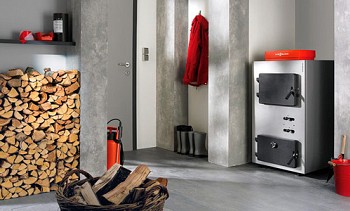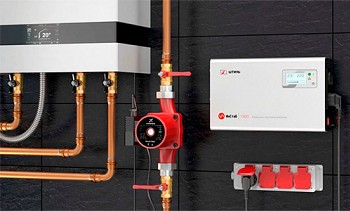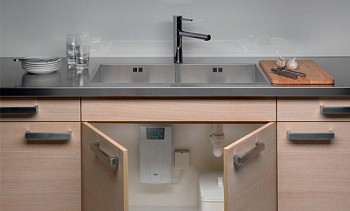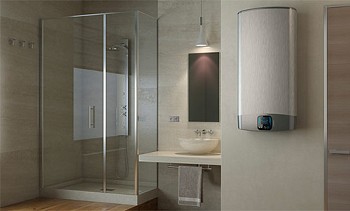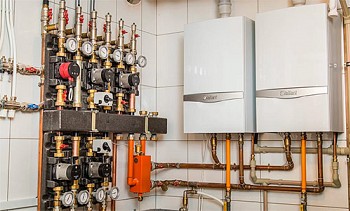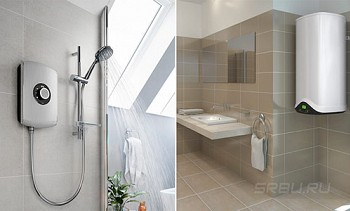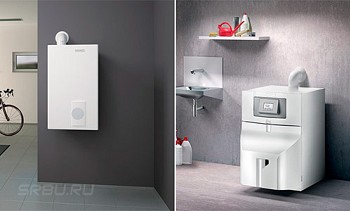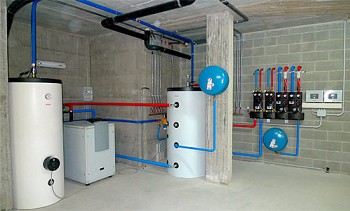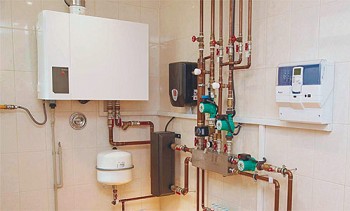Heat pumps draw energy from soil, water or air warmed by the sun. Boilers use the heat released during the combustion of fuel, which ultimately is also the product of the conversion of solar energy during the long evolution of the Earth. Solar collectors are, in a sense, unique: they receive energy directly from the sun.
In order to have the opportunity to heat water for domestic hot water absolutely free tomorrow or to heat your house, today you still have to spend money on purchasing solar collectors. Given the considerable cost of such equipment, it is very important not to make a mistake when choosing. So, you should get at least general ideas about the specifics of solar collectors and the nuances of their work.
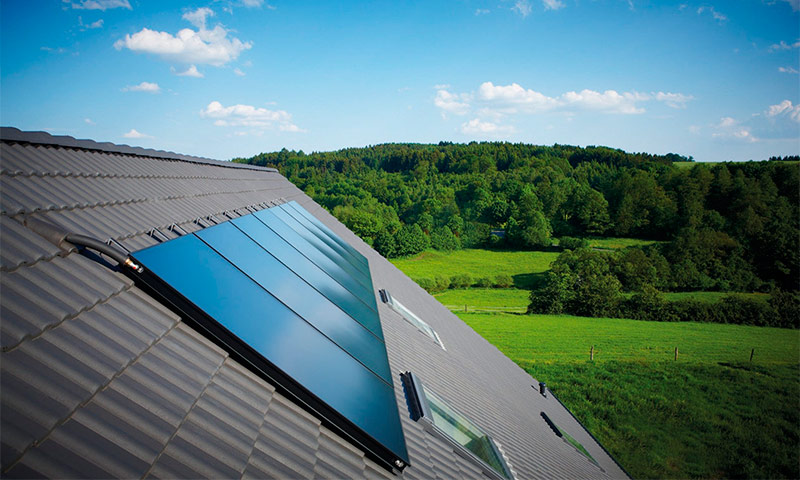
Content:
The specifics of using solar collectors
The main feature of solar collectors that distinguishes them from other types of heat generators is the cyclical nature of their work. No sun - no thermal energy. As a result, such installations are passive at night.
The average daily heat production directly depends on the length of daylight hours. The latter is determined, firstly, by the geographical latitude of the area, and secondly, by the time of year. In the summer, during which the peak of insolation falls in the northern hemisphere, the collector will work with maximum efficiency. In winter, its productivity drops, reaching a minimum in December-January.
In winter, the efficiency of solar collectors decreases not only due to a decrease in the duration of daylight hours, but also because of a change in the angle of incidence of sunlight. Fluctuations in the performance of the solar collector during the year should be taken into account when calculating its contribution to the heat supply system.
Another factor that can affect the productivity of the solar collector is the climatic features of the region. In our country there are many places where for 200 days or more a year the sun is hidden behind a thick layer of clouds or behind a veil of fog. In cloudy weather, the performance of the solar collector does not drop to zero, since it is able to capture the scattered sunlight, but is significantly reduced.

The principle of operation and types of solar collectors
It is time to say a few words about the device and principle of operation of the solar collector. The main element of its design is an adsorber, which is a copper plate with a pipe welded to it. Absorbing the heat of sunlight falling on it, the plate (and with it the pipe) quickly heats up. This heat is transferred to the liquid coolant circulating through the pipe, and that in turn transports it further through the system.
The ability of the physical body to absorb or reflect the sun's rays depends, first of all, on the nature of its surface. For example, a mirror surface perfectly reflects light and heat, but black, on the contrary, absorbs. That is why a black coating is applied to the adsorber’s copper plate (the simplest option is black paint).
The principle of operation of the solar collector

1. Solar collector.
2. Buffer tank.
3. Hot water.
4. Cold water.
5. The controller.
6. Heat exchanger.
7. Water pump.
8. Hot stream.
9. Cold stream.
It is possible to increase the amount of heat received from the sun by the proper selection of glass covering the adsorber. Regular glass is not transparent enough.In addition, it glare, reflecting part of the sunlight falling on it. In solar collectors, as a rule, they try to use special glass with a low iron content, which increases its transparency. To reduce the fraction of light reflected by the surface, an anti-reflective coating is applied to the glass. And so that dust and moisture, which also reduce the throughput of the glass, do not get inside the collector, the case is sealed, and sometimes even filled with an inert gas.
Despite all these tricks, the efficiency of solar collectors is still far from 100%, due to the imperfection of their design. The heated adsorber plate radiates part of the received heat into the environment, heating the air in contact with it. In order to minimize heat loss, the adsorber must be insulated. The search for an effective method of thermal insulation of the adsorber led engineers to create several varieties of solar collectors, the most common of which are flat and tubular vacuum ones.
Flat solar collectors

Flat solar collectors.
The design of a flat solar collector is extremely simple: it is a metal box covered with glass from above. For thermal insulation of the bottom and walls of the body, as a rule, mineral wool is used. This option is far from ideal, since heat transfer from the adsorber to the glass through the air inside the duct is not ruled out. With a large temperature difference inside the collector and outside, the heat loss is quite significant. As a result, a flat solar collector, which functions perfectly in spring and summer, becomes extremely inefficient in winter.
Flat solar collector device

1. Inlet pipe.
2. Safety glass.
3. The absorption layer.
4. Aluminum frame.
5. Copper tubes.
6. Heat insulator.
7. Outlet pipe.
Tubular Vacuum Solar Collectors

Tubular vacuum solar collectors.
The vacuum solar collector is a panel consisting of a large number of relatively thin glass tubes. Inside each of them is an adsorber. To exclude heat transfer by gas (air), the tubes are evacuated. Due to the lack of gas near the adsorbers, vacuum collectors are characterized by low heat loss even in frosty weather.
Vacuum manifold device

1. Thermal insulation.
2. Heat exchanger housing.
3. Heat exchanger (collector)
4. Sealed cork.
5. Vacuum tube.
6. Capacitor.
7. Absorbing plate.
8. Heat pipe with working fluid.
Applications for solar collectors
The main purpose of solar collectors, like any other heat generators, is the heating of buildings and the preparation of water for a hot water supply system. It remains to find out which type of solar collectors is best suited to perform a particular function.
Flat solar collectors, as we have found, are distinguished by good performance in the spring and summer, but are ineffective in winter. It follows from this that it is inexpedient to use them for heating, the need for which arises precisely with the onset of cold weather. This, however, does not mean that there is no business at all for this equipment.
Flat collectors have one indisputable advantage - they are significantly cheaper than vacuum models, so in cases where it is planned to use solar energy exclusively in the summer, it makes sense to purchase them. Flat solar collectors perfectly cope with the task of preparing water for hot water in the summer. Even more often they are used to heat up to a comfortable water temperature in outdoor pools.
Tubular vacuum manifolds are more versatile. With the advent of winter colds, their performance decreases not so significantly as in the case of flat models, which means that they can be used year-round.This makes it possible to use such solar collectors not only for hot water supply, but also in the heating system.

Comparison of flat and vacuum solar collectors.
Location of solar collectors
The efficiency of the solar collector directly depends on the amount of sunlight entering the adsorber. It follows that the collector should be located in an open space, where never (or at least as long as possible) the shadow from neighboring buildings, trees located near mountains, etc.
Of great importance is not only the location of the collector, but also its orientation. The most “sunny” side in our northern hemisphere is the southern side, which means that, ideally, the “mirrors” of the collector should be turned exactly south. If it is technically impossible to do this, then you should choose the direction as close as possible to the south - southwest or southeast.

One should not ignore such a parameter as the angle of inclination of the solar collector. The magnitude of the angle depends on the deviation of the position of the Sun from the zenith, which in turn is determined by the geographical latitude of the area in which the equipment will be operated. If the tilt angle is not set correctly, the optical energy loss will increase significantly, since a significant part of the sunlight will be reflected from the collector glass and, therefore, will not reach the absorber.

How to choose the right solar collector
If you want the heating system of your house to cope with the task of maintaining a comfortable temperature in the premises, and hot rather than lukewarm water flowing from the faucets, while planning to use a solar collector as a heat generator, you need to calculate the necessary power of the equipment in advance. In this case, a rather large number of parameters will have to be taken into account, including the purpose of the collector (hot water supply, heating, or a combination of both), the heat demand of the object (total area of heated rooms or average daily consumption of hot water), climatic features of the region, and features of the collector installation.
In principle, making such calculations is not so difficult. The performance of each model is known, which means you can easily estimate the number of collectors needed to provide heat to the house. Companies that produce solar collectors have information (and can provide it to the consumer) about the change in the power of the equipment depending on the geographical latitude of the area, the angle of inclination of the “mirrors”, the deviation of their orientation from the south, etc., which allows you to make the necessary amendments when calculating reservoir performance.
When selecting the required collector power, it is very important to achieve a balance between the shortage and excess heat generated. Experts recommend focusing on the maximum possible collector power, i.e., use the indicator for the most productive summer season in the calculations. This contradicts the desire of the average user to take equipment with a margin (i.e., to calculate the power of the coldest month) so that the heat from the collector would be sufficient in less sunny autumn and winter days.
However, if you go along the path of choosing a solar collector with increased power, then at the peak of its performance, that is, in warm sunny weather, you will encounter a serious problem: more heat will be generated than consumed, and this threatens the circuit to overheat and other unpleasant consequences . There are two options for solving this problem: either install a low-power solar collector and in parallel connect redundant heat sources in parallel, or purchase a model with a large power reserve and provide ways to discharge excess heat in the spring-summer season.
System stagnation
Let's talk a little more about the problems associated with an excess of generated heat. So, suppose that you have installed a sufficiently powerful solar collector that can fully provide heat to the heating system of your home. But summer came, and the need for heating disappeared. If you can turn off the power for an electric boiler, turn off the fuel supply for a gas boiler, then we have no power over the sun - we can’t turn it off when it is too hot.
Stagnation of the system is one of the main potential problems of solar collectors. If insufficient heat is taken from the collector circuit, the coolant overheats. At a certain moment, the latter may boil, which will lead to the termination of its circulation along the circuit. When the coolant cools and condenses, the system will resume operation. However, far from all types of coolants calmly transfer the transition from a liquid state to a gaseous state and vice versa. Some as a result of overheating acquire a jelly-like consistency, which makes the further operation of the circuit impossible.
Only stable removal of heat produced by the collector will help to avoid stagnation. If the calculation of the power of the equipment is done correctly, the probability of problems is almost zero.
However, even in this case, the occurrence of force majeure circumstances is not excluded, therefore, ways to protect against overheating should be foreseen in advance:
1. Installation of a reserve tank for the accumulation of hot water. If the water in the main tank of the hot water supply system has reached the set maximum, and the solar collector continues to supply heat, switching will automatically occur, and the water will begin to heat up already in the reserve tank. The created stock of warm water can be used for domestic needs later, in cloudy weather.
2. Heated water in the pool. Owners of houses with a pool (it doesn’t matter, indoor or outdoor) have a great opportunity to divert excess heat. The volume of the pool is incomparably greater than the volume of any household storage, from which it follows that the water in it will not heat up so much that it can no longer absorb heat.
3. Drain hot water. In the absence of the ability to spend excess heat, you can simply usefully drain the heated water from the storage tank for hot water into small sewers in small portions. The cold water entering the tank will lower the temperature of the entire volume, which will continue to remove heat from the circuit.
4. External heat exchanger with fan. If the solar collector has a high capacity, the excess heat can also be very large. In this case, the system is equipped with an additional circuit filled with refrigerant. This additional circuit is connected to the system by means of a heat exchanger equipped with a fan and mounted outside the building. If there is a risk of overheating, excess heat enters the additional circuit and is "released" into the air through the heat exchanger.
5. The discharge of heat into the ground. If in addition to the solar collector in the house there is a soil heat pump, excess heat can be sent to the well. In this case, you solve two problems at once: on the one hand, you protect the collector circuit from overheating, and on the other, you restore the heat reserve in the soil exhausted during the winter.
6. Solar collector isolation from direct sunlight. This method is one of the simplest from a technical point of view. Of course, climbing onto the roof and manually curtaining the collector is not worth it - it is difficult and unsafe. It is much more rational to install a remotely controlled screen, like a roller shutter. You can even connect the damper control unit to the controller - if the temperature in the circuit rises dangerously, the collector will close automatically.
7. Coolant drain. This method can be considered cardinal, but at the same time it is quite simple.If there is a risk of overheating, the coolant is drained by means of a pump into a special tank integrated into the system circuit. When the conditions become favorable again, the pump will return the coolant to the circuit, and the collector will be restored.
Other system components
It is not enough to simply collect the heat radiated by the sun. It is still necessary to transport, accumulate, transfer it to consumers, it is necessary to control all these processes, etc. This means that in addition to the collectors located on the roof, the system contains many other components, which may be less noticeable, but no less important. Let us focus only on some of them.

Coolant
The coolant function in the collector circuit can be either water or a non-freezing fluid.
Water has a number of disadvantages that impose certain restrictions on its use as a coolant in solar collectors:
- Firstly, at freezing temperatures it freezes. So that the frozen coolant does not break the pipes of the circuit, it will have to be drained with the approach of cold weather, which means that in winter you will not receive even small amounts of thermal energy from the collector.
- Secondly, a not too high boiling point of water can cause frequent stagnation in the summer.
Non-freezing liquid, unlike water, has a significantly lower freezing point and an incomparably higher boiling point, which increases the convenience of using it as a coolant. However, at high temperatures the “non-freezing” can undergo irreversible changes, therefore it should be protected from excessive overheating.
Adapted pump for solar systems
To ensure forced circulation of the coolant along the collector circuit, a pump adapted for solar systems is needed.
DHW heat exchanger
Heat transfer from the solar collector circuit to the water used in the domestic hot water supply, or to the heat carrier of the heating system is carried out by means of a heat exchanger. As a rule, for the accumulation of hot water, a large volume tank with an already built-in heat exchanger is used. It is rational to use tanks with two or more heat exchangers: this will allow you to take heat not only from the solar collector, but also from other sources (gas or electric boiler, heat pump, etc.).
Automation
Such a complex system can not do without automation, which controls and controls the process. The controller allows you to automate the work of the collector: it analyzes the temperature in the circuit and the storage tank, controls the pump and valves responsible for the movement of coolant along the circuit. If the coolant in the circuit and the water in the tank overheat, the controller will give a command to dump the heat into an alternative heat sink - an additional water tank or an outdoor air heat exchanger.
If at the end of daylight hours the temperature of the water in the storage tank exceeds the temperature of the coolant in the collector circuit, the automation will stop the circulation of the coolant along the circuit so that the accumulated heat is not released into the atmosphere through the collector itself. Modern controllers make it possible to remotely monitor the operation of the system and, if necessary, make adjustments.
Today it will not be difficult to find a solar collector and any of the components necessary for its operation on the market. It is quite possible to assemble a system from elements purchased separately. However, manufacturers offer ready-made kits, which include a collector, pumps, storage tanks, control automation, etc. The purchase of such a kit is not only a saving of your time, but also a guarantee of the system’s performance.

